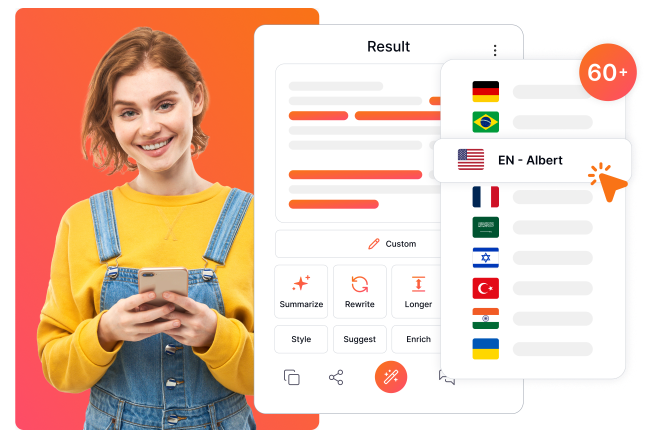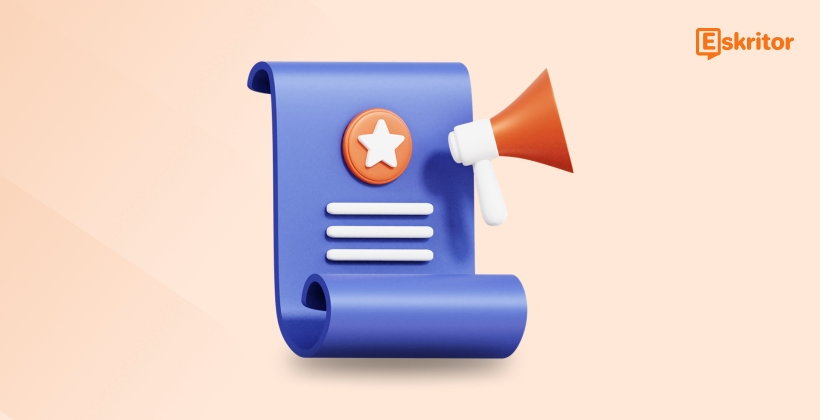How AI Writing Tools Transform Content Creation
How AI Writing Tools Transform Content Creation
Blog Article
Unlocking Creativity with an AI Writer
AI writing tools are no more a futuristic concept but a practical answer reshaping the way in which content is created. By leveraging synthetic intelligence, these instruments are becoming required for professionals trying to streamline their workflows, lift material quality, and tackle the growing needs of the digital material landscape. AI Writer (นักเขียน AI) tools are transforming content creation with key data and insights.

Increased Efficiency and Pace
One of the very substantial features of AI publishing instruments is their ability to significantly lower the full time used on creating content. In accordance with new data, AI content era tools can accelerate the writing process by as much as 50%, letting authors to make supreme quality work in a fraction of the time it'd typically take.
These resources achieve this by automating repeated jobs like grammar checks, rephrasing, and also generating entire drafts centered on input prompts. For example, marketers can now generate outlines, social media posts, or mail campaigns in a matter of minutes, liberating up useful time to concentrate on technique and creativity.
Improved Material Quality and Reliability
Statistics show that 65% of content marketers struggle with maintaining consistent quality across their output. AI publishing tools solve this issue by giving characteristics such as for example syntax corrections, tone adjustments, and readability enhancements. These resources make sure that the last material is polished, skilled, and arranged with the intended audience's needs.
Another critical function is the capacity to maintain brand voice consistently across various kinds of copy. Whether it's a formal article or a lively social media marketing update, AI instruments can adapt and improve the tone to resonate with readers.
Improved SEO Performance
Creating content enhanced for search motors is a complicated yet crucial task. Study suggests that 68% of on line experiences begin with a search motor, creating SEO an crucial section of content creation. AI-powered resources can create keyword-rich material and suggest changes to meta titles, explanations, and headers, supporting writers produce SEO-friendly articles that rank higher on research results.
Some methods also analyze past traits and suggest content topics that will probably attract higher traffic. By establishing keyword study and optimization to the writing method, businesses may assure their content reaches a broader audience.
Personalization and Audience Diamond
AI resources use machine understanding methods to analyze audience information and offer actionable insights. These tools help the formation of individualized material that resonates with particular demographics. Data demonstrate that customized content pushes 80% higher proposal rates, indicating its usefulness in capturing and preserving audience attention.
For instance, AI can recommend words or issues based on user behavior, ensuring that content is applicable and engaging for the prospective audience. That degree of personalization increases user experience and fosters stronger connections with readers.
The Potential of AI in Material Formation

The influence of AI in material development is undeniable, but this is just the beginning. Business forecasts declare that the market for AI content era tools can develop by 20% annually around the following five years. Since the technology evolves, these tools are likely to become much more superior, offering characteristics such as multilingual features, real-time audience feedback, and greater innovative collaboration.
AI writing tools are not here to replace human writers but to empower them. By automating routine tasks, ensuring quality, and offering data-driven ideas, these methods are reshaping digital interaction and allowing creators to produce more impactful and efficient content. The rise of AI in that area signals an exciting time of creativity in material creation.
Report this page